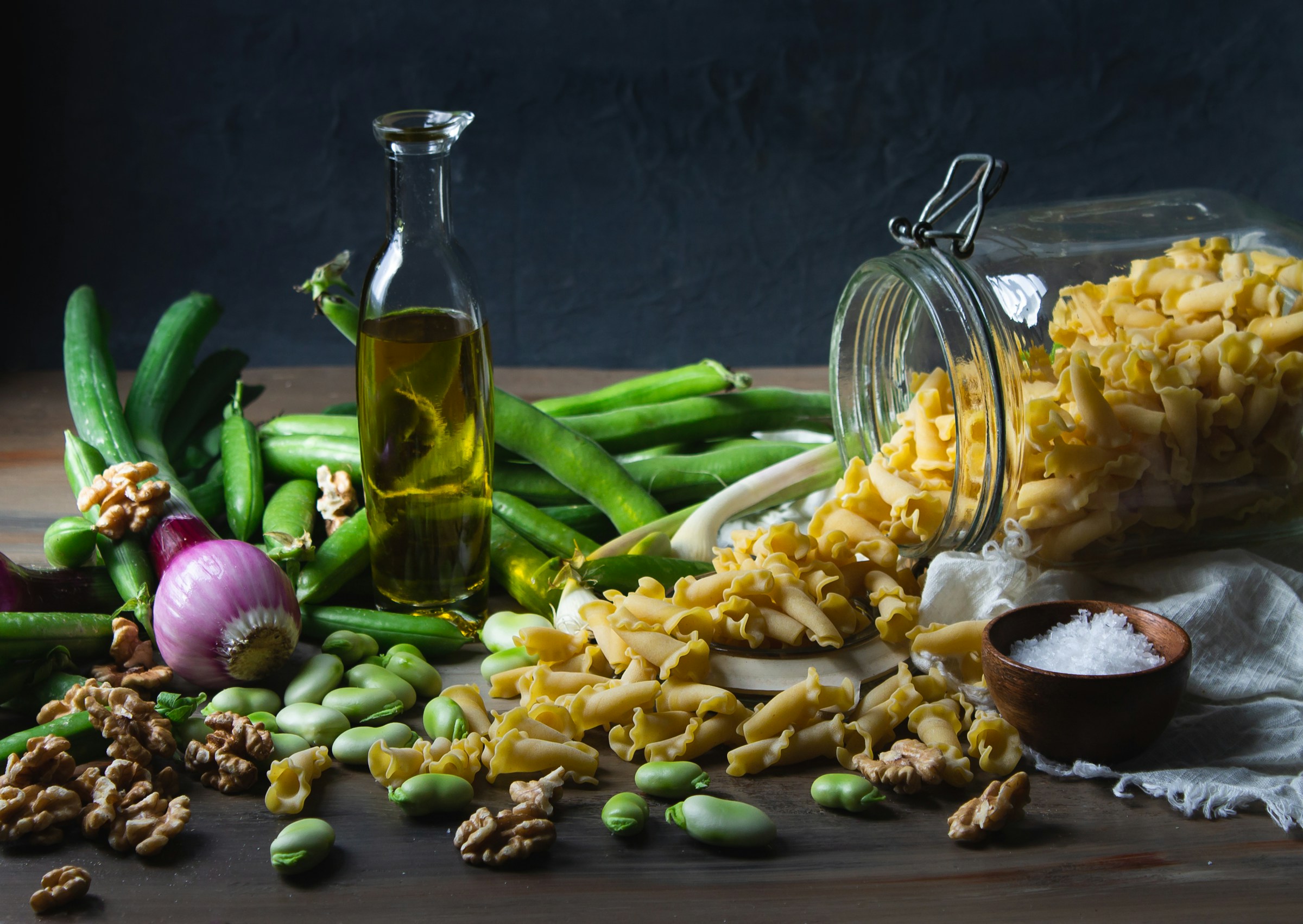The art of preparing delightful dishes does not begin and end with following a recipe. A significant part revolves around storing ingredients correctly, especially when it comes to cooking oils. These essentials add flavor and richness to our food, but improper storage can lead to rancidity, altering their taste and compromising the quality of meals.
In this comprehensive guide, we delve into the various techniques of storing cooking oils in the kitchen to maintain their freshness. From understanding the best containers to considering the right storage spots, you will get pointers on ensuring your oil stays fresh for as long as possible.
This might interest you : How can a fold-down kitchen table help in maximizing space for healthy meal prep?
1. Understanding the Importance of Proper Cooking Oil Storage
Before we explore the techniques of oil storage, it’s vital to comprehend why you should give it such importance. Cooking oils are an invaluable component of our food that add flavor and texture. However, when oils are exposed to heat, light, and oxygen, they can become rancid, which not only spoils their taste but also their nutritional value.
Every type of cooking oil, whether it’s olive, sunflower, or coconut, has a particular shelf life and smoke point – the temperature at which the oil begins to smoke and degrade. Storing them correctly keeps their flavor intact and ensures they retain their high heat tolerance, which is essential for cooking methods like frying.
In the same genre : How can a fold-down kitchen table help in maximizing space for healthy meal prep?
2. Choosing the Right Containers for Cooking Oil Storage
The container you chose to store your cooking oil can make a significant difference in its shelf life. Firstly, avoid storing oil in clear glass or plastic bottles as they allow light to penetrate, speeding the oxidation process that leads to rancidity.
Instead, opt for dark glass bottles, ceramic containers, or stainless steel cans that shield the oil from light. Moreover, ensure that your chosen container has a tight seal to prevent exposure to air. Transfer oils bought in large quantities into smaller containers for daily use, minimizing the exposure of the bulk oil to air and light.
3. Storing Cooking Oils at the Right Temperatures
Temperature plays a crucial role in preserving the freshness of your cooking oil. When exposed to high temperatures, oils can reach their smoke point faster, altering their flavor and nutritional profile. It’s best to store oils at room temperature, away from any heat sources such as your stovetop or oven.
Refrigeration is recommended for some oils like walnut and flaxseed, which have a shorter shelf life. When stored in the fridge, these oils may become cloudy and thick, but this does not affect their quality. Simply bring the oil back to room temperature before using.
4. The Role of Water in Cooking Oil Storage
Water might seem harmless, but it can be a significant enemy when it comes to storing cooking oils. When water mixes with oil, it creates an environment conducive to microbial growth. This can lead to the oil turning rancid faster.
Always ensure the container and utensils you use are completely dry before coming into contact with the oil. If you’re reusing oil, particularly after frying, let it cool and then strain it to remove any food particles, as they can carry moisture and spoil the oil.
5. Focusing on the Shelf Life of Different Cooking Oils
Not all cooking oils have the same shelf life. Oils like olive and canola can last up to a year if stored correctly, while others like sesame and grape seed oil might only be good for a few months.
It’s beneficial to keep track of when you opened a bottle of oil. Write the date on the label, and always use older oils first. If you notice any change in color, smell, or flavor, trust your senses. The oil might have gone rancid and should be discarded.
The shelf life can also be affected by the type of oil. Unrefined oils, which are less processed, often have a shorter shelf life than their refined counterparts because they retain more of the components that can become rancid.
Proper storage of cooking oils may seem minute, but it plays a significant role in maintaining the quality and flavor of your dishes. By understanding and employing these techniques, you can ensure your oils stay fresh for longer, offering you the best culinary experience.
6. Exploring Specific Storage Techniques for Various Cooking Oils
Different cooking oils require different storage techniques due to their unique characteristics. For example, some oils, like extra virgin olive oil and avocado oil, have high smoke points and can be stored at room temperature, in a cool and dark place away from sunlight. These oils also have a relatively long shelf life, lasting up to a year or longer if stored correctly.
On the other hand, coconut oil, a popular choice for many cooks, solidifies at temperatures below 76 degrees Fahrenheit. Coconut oil is best stored in a cool, dark place, but not in the refrigerator. If it does solidify, you can easily liquefy it by heating it gently.
Oils that are high in polyunsaturated fats, such as sesame oil and flaxseed oil, are more prone to rancidity and have a shorter shelf life. These oils are best stored in the refrigerator and used within a few months of purchase.
Frying oils, such as vegetable, canola, and peanut oil, have high smoke points, making them ideal for high heat cooking. These oils can be reused several times if they’re strained after each use to remove food particles and stored in a cool, dark place.
Remember to always tightly seal the container after each use to prevent exposure to air and potential contamination. A simple yet effective practice is to pour the quantity of oil you need for cooking into a separate container, to avoid repeatedly exposing the entire oil content to air, light, and heat.
7. Considerations for Long Term Cooking Oil Storage
If you buy cooking oils in bulk or don’t use them quickly, it is crucial to store them correctly for long term use. As a rule of thumb, most oils can be stored in a cool, dark place, away from direct sunlight and heat sources. However, some oils require refrigeration, especially if you plan to store them for an extended period.
For long term storage, extra virgin olive oil can be stored in a cool, dark place for up to two years. For coconut oil, it can last up to three years if stored correctly. On the other hand, oils like flaxseed oil and sesame oil should be used within a few months of opening due to their shorter shelf life.
When storing oil for a long term, it’s essential to make sure the container is properly sealed to avoid exposure to air and potential spoilage. It’s also a good practice to regularly check the aroma and color of your stored oils. If the oil smells rancid or has changed color, it’s best to discard it.
Conclusion
Understanding the specific storage techniques for various types of cooking oils is crucial in maintaining their freshness, enhancing the flavor of your dishes, and prolonging their shelf life. Whether it’s the robust extra virgin olive oil, the versatile coconut oil, or the delicate flaxseed oil, each has its unique storage requirements.
By choosing the right containers, keeping water at bay, storing oils at the right temperature, and focusing on the specific storage needs of different oils, you can ensure your cooking oils remain fresh for longer. Besides, proper storage also helps retain the nutritional value of the oils, offering you a healthier and more enjoyable culinary experience.
In the end, the key to successful cooking oil storage is mindfulness. Be aware of the oil’s attributes, its smoke point, the optimal storage conditions, and its shelf life. This awareness will not only help maintain the quality of your oils but also enhance the overall flavor and quality of your dishes. So, the next time you buy a bottle of cooking oil, remember these storage techniques to ensure your oil stays fresh for as long as possible.






